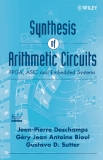Tài liệu Thư viện số
- Công nghệ thông tin (2019 )
- Điện tử viễn thông (1133 )
- Quản trị kinh doanh (1305 )
- Kế toán (1003 )
- Môi trường (968 )
- Du lịch (861 )
- Kiến trúc (424 )
- Xây dựng (1082 )
- Ngoại ngữ (302 )
- Y dược (1391 )
- Khoa học tự nhiên (874 )
- Khoa học xã hội (514 )
- Lý luận chính trị (573 )
- Sau đại học (243 )
- Tài liệu tham khảo khác (252 )
Danh mục TaiLieu.VN
- Mẫu Slide Powerpoint
- Luận Văn - Báo Cáo (344720)
- Kinh Doanh Marketing (65512)
- Kinh Tế - Quản Lý (48934)
- Tài Chính - Ngân Hàng (55898)
- Công Nghệ Thông Tin (142209)
- Tiếng Anh - Ngoại Ngữ (47066)
- Kỹ Thuật - Công Nghệ (134345)
- Khoa Học Tự Nhiên (107174)
- Khoa Học Xã Hội (82451)
- Văn Hoá - Nghệ Thuật (54408)
- Y Tế - Sức Khoẻ (173915)
- Nông - Lâm - Ngư (62504)
- Kỹ Năng Mềm (29016)
- Biểu Mẫu - Văn Bản (27610)
- Giải Trí - Thư Giãn (51994)
- Văn Bản Luật (198854)
- Tài Liệu Phổ Thông (402015)
- Trắc Nghiệm Online (213578)
- Trắc Nghiệm MBTI
- Trắc Nghiệm Holland
Synthesis of arithmetic circuits FPGA, ASIC, and embedded systems
From the beginnings of digital electronic science, the synthesis of circuits carrying out arithmetic operations has been a central topic. As a matter of fact, it is an activity directly related to computer development. From then on, a well-known technical discipline was born: computer arithmetic. Traditionally, the study of arithmetic circuits has been oriented toward applications to general-purpose computers, which provide the most important applications of digital circuits. However, the electronic market share corresponding to specific systems (embedded systems) is significant. It is important to point out that the huge business volume that corresponds to generalpurpose computers (personal computers, servers, main frames) is distributed among a relatively reduced number of different models. Therefore the number of designers involved in general-purpose computer development is not as big as it might seem and is much less than the number of engineers dedicated to production and sales. The case of embedded systems is different. Embedded systems are circuits designed for specific applications (special-purpose devices), so a great diversity of products exist in the market, and the design effort per fabricated unit can be a lot bigger than in the case of general-purpose computers. In consequence, the design of specific computers is an activity in which numerous engineers are involved, in all type of companies—even small ones—within numerous countries.
Từ khóa: embedded systems, digital electronic, kỹ thuật điện tử, computer arithmetic, số học máy tính, hệ thống nhúng, kỹ thuật số
578 p trinh 20/11/2012 189 4


